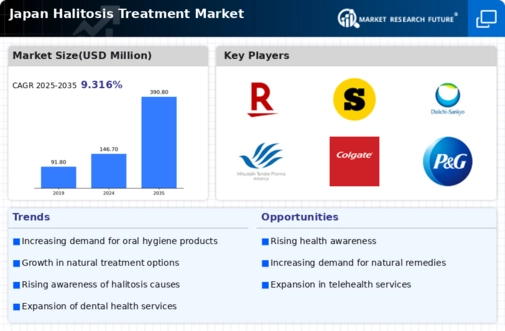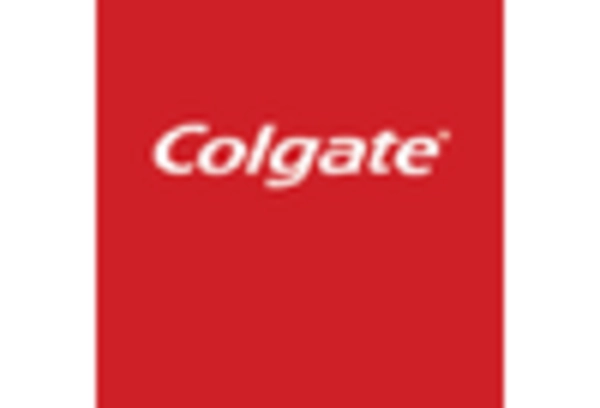Growing Health Consciousness
The increasing health consciousness among the Japanese population appears to be a significant driver for the halitosis treatment market. As individuals become more aware of the implications of oral health on overall well-being, the demand for effective halitosis treatments is likely to rise. Recent surveys indicate that approximately 70% of Japanese adults express concern about their breath freshness, which suggests a strong market potential. This trend is further supported by the rise in preventive healthcare measures, leading to a greater emphasis on oral hygiene products. Consequently, manufacturers are focusing on developing innovative solutions that cater to this growing demand, thereby enhancing their market presence in the halitosis treatment market.
Aging Population and Oral Health Needs
Japan's aging population is a crucial factor influencing the halitosis treatment market. With a significant portion of the population over the age of 65, there is a growing need for specialized oral care products that address age-related issues, including halitosis. Older adults often experience dry mouth and other oral health challenges, which can exacerbate bad breath. This demographic shift suggests a potential increase in demand for tailored halitosis treatments that cater to the unique needs of seniors. Market data indicates that the elderly population is expected to reach 36% by 2040, highlighting the urgency for companies to innovate and adapt their offerings in the halitosis treatment market.
Technological Advancements in Oral Care
Technological advancements in oral care products are transforming the halitosis treatment market. Innovations such as smart toothbrushes and advanced mouthwashes that utilize nanotechnology are gaining traction among consumers. These products not only promise better breath control but also offer additional benefits such as plaque reduction and gum health improvement. The integration of technology into oral care routines is appealing to tech-savvy consumers, particularly in urban areas of Japan. As a result, the market is witnessing a shift towards high-tech solutions, which could potentially increase the overall market size. The introduction of these advanced products may lead to a competitive edge for companies operating in the halitosis treatment market.
Rising Influence of E-commerce Platforms
The rise of e-commerce platforms is reshaping the distribution landscape of the halitosis treatment market. With the increasing penetration of the internet and mobile devices, consumers in Japan are increasingly turning to online shopping for their oral care needs. This shift not only provides convenience but also allows for a wider selection of products, including niche halitosis treatments that may not be available in physical stores. Market analysis indicates that online sales of health and wellness products have surged by over 30% in recent years, suggesting a robust opportunity for companies to expand their reach. As e-commerce continues to grow, it is likely to play a crucial role in the evolution of the halitosis treatment market.
Cultural Influences on Oral Hygiene Practices
Cultural influences play a pivotal role in shaping consumer behavior regarding oral hygiene in Japan. The traditional emphasis on cleanliness and personal grooming has led to a heightened awareness of oral health, which directly impacts the halitosis treatment market. Many Japanese consumers prioritize fresh breath as a social norm, driving the demand for effective treatment options. Furthermore, the popularity of oral care rituals, such as the use of mouthwash and breath fresheners, indicates a strong market inclination towards products that ensure oral freshness. This cultural backdrop suggests that companies must align their marketing strategies with local customs to effectively penetrate the halitosis treatment market.

















Leave a Comment